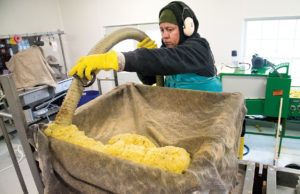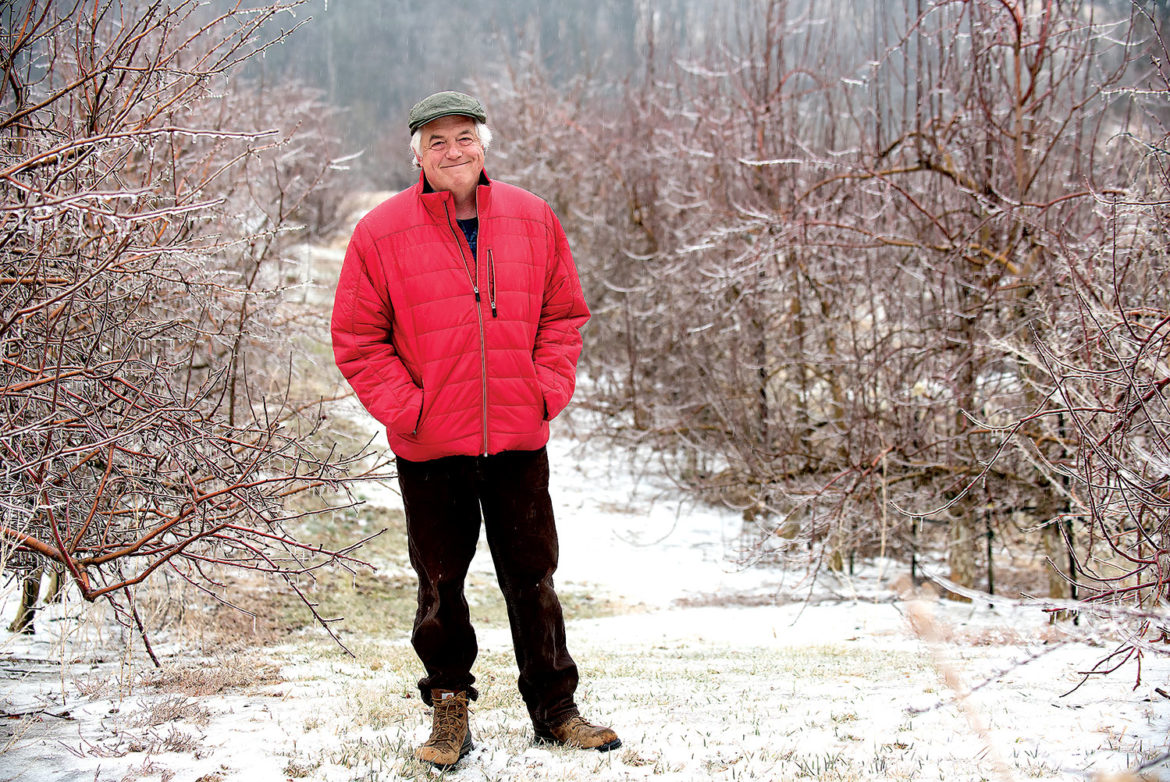By Nancy Lavin
Well before popular ciders Angry Orchard and Woodchuck graced barroom taps and liquor store shelves, Rob Miller planted the first 1,000 apple trees on his Jefferson farm.
The fruits of his labor became the basis for the first licensed cidery in Maryland, Distillery Lane Ciderworks, and catalyzed a craft cider craze that’s gaining traction statewide.
On an icy February morning, machines whirred to life in the production room at Distillery Lane. Rows of apples cycled through a moving belt as Miller picked out the rejects. “Anything you wouldn’t eat, we don’t use,” he said. Surviving fruits were ground into pulp, then squeezed into juice through a hydraulic press. Trays of brown, leathery apple carcasses, the remains from the press, were stacked the floor, destined for the troughs of local pig farms. Along with yeast, the juice would be poured into the row of 500-gallon, stainless steel tanks to ferment.
Give it a year, filter, blend, bottle and voilà, hard cider. Easy, right?
Not exactly, according to Miller, or Lori Leitzel Rice, another leader in the craft cider industry. Rice and her husband Eric Rice own and operate Willow Oaks Craft Cidery in Middletown.
Crafting hard cider takes years of experience, a green thumb, a mind for science and an artist’s inspiration.

Oscar Montes spreads gold rush apple pulp Wednesday onto a rack that will be pressed for cider at Distillery Lane Ciderworks.
Photo by Dan Gross
At hard cider’s core are the apples themselves: 40 varieties grow on Distillery Lane’s 9-acre farm, while Willow Oaks grows about 20, all organic varieties. Beware biting down on a stray fruit, though, especially bittersharps. Food and cooking web- site Serious Eats compared the taste to “sucking on a black tea bag soaked in lemon juice.”
The high tannins and acidity make bittersharps uniquely suited for cider-making, the sharpness offset by blending with other, sweeter cooking and eating apples.
A single cider can feature three, four or even five apple varieties. Both cideries sell a few single-variety ciders, too. Fermenting offers avenues for experimentation: in the strain of yeast, the time fermenting, even the vessel. Willow Oaks relies on neutral oak barrels, combining batches from several into a single cider, Rice said.
Some are uncarbonated or ‘still.’ Others burst with bubbles. As tribute to the French ciders that inspired Eric Rice, Willow Oaks includes several varieties described as “pétillant” – a little bit fizzy, Rice said.
Miller drew his inspiration from traditional English cider, bringing on home-brewer Tim Rose as Distillery’s cider maker. Rose began with brews, and found cider making more closely resembled wine than beer.
Rice also described Willow Oaks’ products as “much more wine-like.” They’re not sweet, either, as they are fermented completely to eliminate residual sugar from the fruit. That has created perception problems when people visit expecting a sweet, juice-like beverage a la Woodchuck.
Before they opened a tasting room, they would waive off those misinformed tasters seeking sweet beverages, Rice said. Now, they’ve tried to expand their offerings a bit to cater to all palates, experimenting with different fruits. There’s also a collaboration planned with McClintock Distilling for an apple brandy.
Growing popularity has paved the way for greater understanding, and with it, a wider spectrum of options. Red Shedman Farm Brewery in Mount Airy, for example, now boasts four regular ciders plus seasonal specials, in addition to its array of craft brews.
Owner favorites
Lori Leitzel Rice, co-owner at Willow Oaks Craft Cidery
Gloaming NV, 2017 Governor’s Cup gold medal winner, best in class
Features apples and black currents with “tiny and rich bubbles”
What she said: “It’s my favorite cider, not just of ours, but the best I have ever put in my mouth.”
Rob Miller, owner of Distillery Lane Ciderworks
Kingston Black, 2015 Great Lakes Cider and Perry competition gold medal winner in dry-aged cider, single-variety, bottle-conditioned, dry
What he said: “I would have an entire orchard of Kingston Blacks if they weren’t so hard to grow.”

